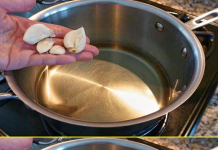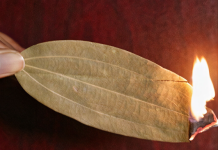Using the right materials and these tips, brushed metal surfaces can be rejuvenated.
From sinks to appliances, counters to cabinet hardware, stainless steel remains a popular kitchen trend due to its sleek appearance and durability. However, despite its toughness, stainless steel can show unsightly scratches in everyday life. However, scratches on stainless steel can be minimized, if not eliminated altogether.
If you look closely, you will see brush marks on the surface of stainless steel. This is called texture and is the result of the manufacturing process. Whichever method is used, it is important to only rub in the direction of the texture.
Note: Applying the techniques described here to stainless steel with a protective clear coat or synthetic surface will result in further damage.
Keeping these precautions in mind, collect the material and begin restoring the stainless steel. It may not look like new, but it will certainly restore the look of your kitchen and keep it that way for years to come.
Materials and Tools
- Stainless steel scratch remover (e.g., Bar Keepers Friend)
- Water
- Microfiber cloth
- Stainless Steel Scratch Remover Tool
How to remove fine scratches from stainless steel

Use a non-abrasive agent such as Bar Keeper’s Friend or Revere Stainless Steel and Copper Cleaner. (In an emergency, you can also use a toothpaste with whitening properties).
- If using a powdered stainless steel scratch remover, add enough water at a time to make a paste that roughly resembles toothpaste. If the selected compound is a paste, proceed to the next step.
- Apply a small amount of the remover to a microfiber cloth and gently rub it back and forth over the scratch in the direction of the metal eye. Continue wiping until the scratch disappears.
- Gently wipe the surface with a new microfiber cloth to remove any compound residue. Dry with another fresh microfiber cloth. Repeat steps 2 and 3, if necessary, to completely remove scratches from the stainless steel surface.
How to remove deep scratches on stainless steel
For larger scratches, if the compound does not work, use a stainless steel scratch removal kit such as Scratch-B-Gone or Siege Stainless Steel Sink and Cookware Scratch Remover. Scratch removal kits usually include a set of abrasives and an abrasive pad. From the coarsest grit to the finest, they remove scratches from stainless steel and restore the surface. Always follow the instructions specified by the kit manufacturer.
- Read the manufacturer’s instructions carefully. Check the direction of the stainless steel grain.
- Using an abrasive pad appropriate for the scratch you want to remove, rub in the direction of the scratch. Use as much force as necessary to remove the scratch, but no more than necessary.
- If recommended by the manufacturer, replace the pad with a smoother abrasive pad and continue the polishing process, adding water or the compound in the kit if necessary.
- Finally, wipe the surface with a microfiber cloth to clean and polish the steel.
To maintain the beauty of metal surfaces, avoid using abrasives or steel wool in routine cleaning and maintenance. Protect your stainless steel sink with a rubber pan pad when cleaning heavy pans and cast iron pans. Just be sure to remove the pads after cleaning to prevent them from staying down and discoloring.











